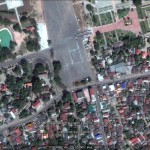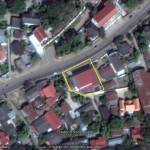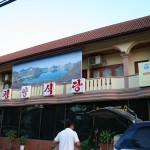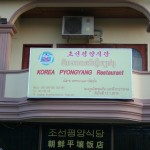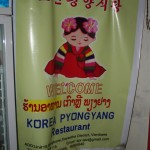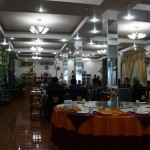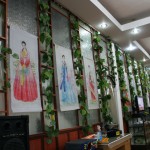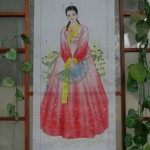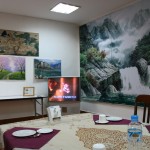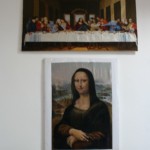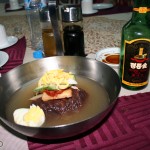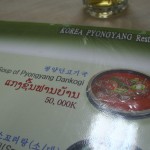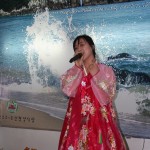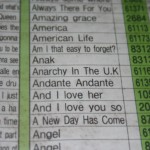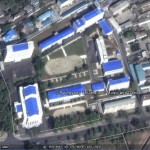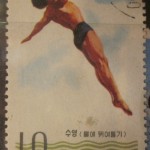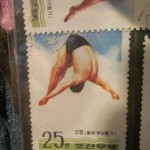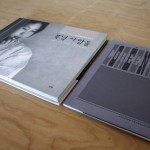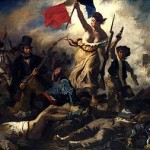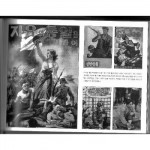John M. Glionna wrote an interesting article in the Los Angeles Times that (perhaps despite the authors intentions) is actually a good introduction to the industrial organization of transporting North Korean defectors. Though not the focus of the story, he highlights the different types of organizations, which seek to fulfill different missions and require different sources of funding–and how all these differences affect the experiences felt by the actual defector.
Reporting from Gyeongju, South Korea— On his first day of freedom, North Korean defector Kim Yong-chul sat crossed-legged on the floor of a small apartment without a stick of furniture. He ate fried chicken and pork belly, washed down with celebratory shots of soju from a paper cup, toasting the stranger he says saved his life.
Krys Lee is no stranger now. The Korean American writer is more like a fussy parent, worrying that the fortysomething refugee was drinking too much and might fall prey to other addictions in South Korea’s culture of plenty.
That morning, Lee had greeted Kim as he emerged from a high-security facility near Seoul, the South Korean capital, that serves as a decompression chamber for defectors from the North. Like other defectors, Kim had adopted a new name in hope of protecting relatives in North Korea. His was Yong-chul, “the wanderer.”
Lee had accompanied him on the four-hour drive to his government-sponsored apartment in Gyeongju, like a mother seeing her son off to college, and independence.
“I feel so free,” said Kim, a compact man with a vise-grip handshake, raising another cup of the clear alcohol. “I wish I could just be in a bathtub full of soju.”
Then he opened a notebook and read a poem in which he described Lee as a tiny flower whose “fragrance travels a thousand miles.”
Their unlikely relationship was forged along the underground railroad that moves North Korean refugees to China and then to Southeast Asian nations en route to South Korea.
Lee is not a missionary, social worker or for-profit broker, characters who people the way stations of the underground railroad. She’s a socially conscious writer with a comfortable life in Seoul who made risky trips to China to offer money and advice to a stranger.
In the end, Lee rescued Kim not from the North Koreans, but from a China-based missionary she says was holding him against his will to further his own fundraising.
The experience revealed the often-competing agendas of those in the business of helping North Korean defectors. Lee also gained the friendship of a political fugitive whose experiences had led him to trust no one.
::
In March, Lee crept up a dark stairwell to a dingy apartment near the Chinese city of Yanbian. She was hustled inside by a nervous Kim, who had recently fled the North.
For years, Lee had volunteered her time and raised funds to assist North Korean defectors. She had learned of Kim’s predicament from a fellow activist, and she had put up the money for his apartment. Now she was meeting him for the first time.
As Kim tells it, he was a low-level official who learned that his wife had been unfaithful with a party cadre. He beat the man senseless and was banished to a rural prison. Upon his release, he went to the border area with China and became a beggar.
In an impoverished land where the throwaway bones are picked clean, the life of an outcast was particularly cruel. To survive, Kim drank the swill from the bottom of garbage cans.
Lee, who is in her 30s, had known hardship of a different kind. Born in Seoul, she grew up in California and Washington state. Her father, a pastor, was emotionally troubled and often violent. The family was always short of money and had no health insurance. Her mother died of cancer, she said, because she couldn’t afford timely treatment.
Her upbringing instilled empathy for those who have survived difficult roads. “Why am I attracted to survivors, broken people, the lonely?” she said. “It’s really sad, but it’s because of my childhood.”
For more than a decade, Lee has lived in Seoul, teaching and writing fiction.
Her work explores themes of power and survival, both dominant in the world of defectors. In China, where the refugees have no legal status, they are at the mercy of strangers for their survival.
Lee saw how many aid groups, even if their motives were pure, grew accustomed to the adulation of defectors who bowed low and rushed to open doors. The inequality bothered her.
At her first meeting with Kim, she saw that same submissiveness in his eyes. Over subsequent visits, they developed a relationship. She brought him necessities and offered a sympathetic ear.
She soon learned disturbing things about the Christian missionary who was sheltering Lee.
Lee knew the missionary, whom she calls Min-seok. He operated safe houses for defectors along the border, and Lee had been connecting him with aid groups in South Korea and the U.S. to move more refugees to safety.
Kim told her Min-seok was hoarding the food and toilet paper she had bought for him and had resold a donated refrigerator. The missionary sometimes locked Kim in his apartment at night.
But Kim trusted neither Min-seok nor Lee.
“You’re not even a sister who shares blood with me. We don’t have any ties. Why you are helping me?” he recalls asking her.
Lee responded: “Anyone would and should do this. Don’t worry about it.”
Min-seok rarely allowed Kim and Lee to be alone. But one day in April when the missionary was away, the two talked for hours in Kim’s apartment. Suddenly, he turned to Lee and said, “Please help me get out of here.”
Lee approached Min-seok about moving Kim to South Korea, but the missionary resisted. He suggested that Kim might return to North Korea to spread the Christian faith. Lee knew Min-seok was taking Kim to churches and claiming he had converted him, as a way to solicit donations.
Min-seok wasn’t ready to give up Kim. He glared at Lee.
“We’ll make sure he’s eventually taken care of,” she recalls him saying, “but I call the shots here.”
Lee returned to Seoul, determined to free Kim.
Several nonprofits told her they preferred to assist women and children. Desperate, she called a for-profit broker. Though she had heard stories of shady outfits abandoning defectors or hounding them for fees, Lee found one group with a good record. She gave the organization a few thousand dollars to extricate Kim from the missionary’s grasp.
In mid-May, Kim called her from a new location in China to which Min-seok had secretly moved him. She gave the broker Kim’s cellphone number. Within days, she received furtive calls from Kim in Laos and Thailand.
More than a month later, South Korean national security officers called Lee, asking how she was acquainted with a newly arrived North Korean defector. It was then she knew that Kim had arrived safely in the South.
She also heard from Min-seok. “He was shrieking,” she recalled. “He called me every curse word in the Korean dictionary. He said: ‘I know a lot of gangsters. If you ever set foot in China again, it’ll be over. You double-crossed me.'”
::
During four months in government isolation, Kim was anguished: He wanted to trust Lee, but despite all they’d been through, he couldn’t.
He still suspected she was a broker out for money. Hoping to flush out her real motives, he called to tell her he owed her his life and would even kill himself if she asked.
“No,” she said. “You have to live and you have to live well.”
That conversation changed his feelings about her. Soon, he began to telephone Lee weekly. “It didn’t matter what we talked about,” he said. “I just wanted to hear her voice.”
The menacing calls from Min-seok have continued. Now, when Lee meets defectors, she emphasizes the hard life ahead in a society where some people will try to take advantage of them, much as the missionary tried to exploit Kim.
Kim now knows their relationship isn’t about power, or money.
“She treated me like a human being,” he said. “In return, she received the richest thing in life: a person’s heart, his mind.”
